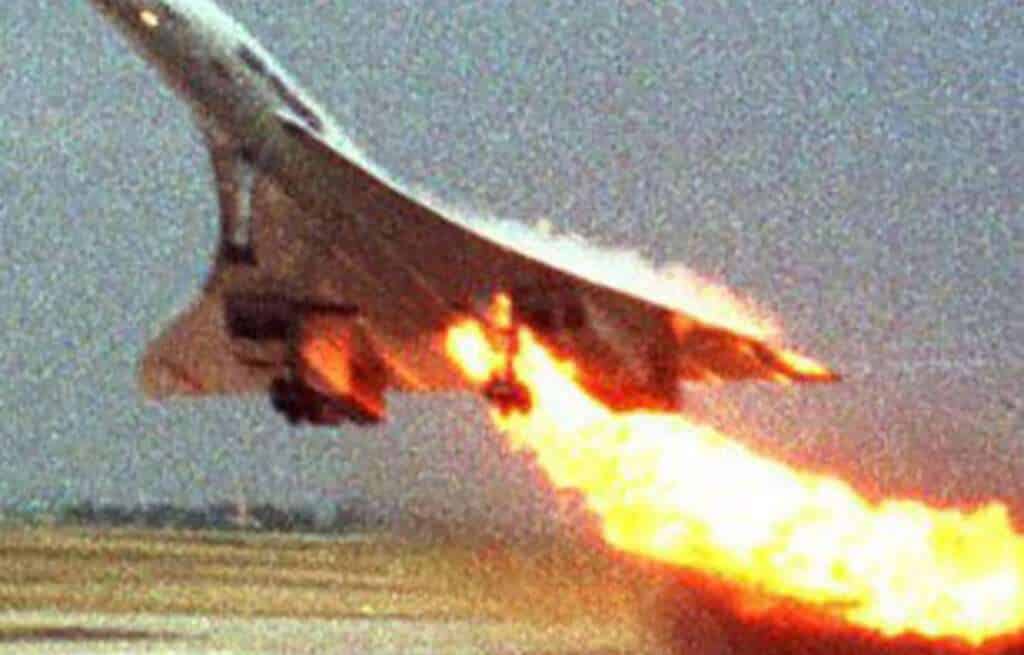As mentioned in our previous edition of the Concorde history mini-series, July 25, 2000 changed a lot of things for Concorde. And that was Air France flight 4590.
This was the only fatal accident that the aircraft had in its 27-year history, but had significant ramifications for the overall program.
Without further ado, let’s get into it…
The Crash of Air France Flight AF4590…

On July 25, 2000, Air France Flight AF4590 began its pushback from its gate at Paris Charles de Gaulle Airport.
It taxied out to the runway, and all seemed fine at this moment. The Air France Concorde lined up on Runway 26R, preparing for a very fast departure out to New York’s JFK.
Before Concorde departed, Continental Airlines Flight 55, a McDonnell Douglas DC-10, had departed from Runway 26R, but lost a titanium alloy strip that was part of the engine cowl. No one in the control tower nor in the flight deck of Air France Flight AF4590 noticed this.
AF4590 was given takeoff clearance by controllers in the tower at Paris Charles de Gaulle, and the aircraft began its roll down Runway 26R.
During the roll, the aircraft struck the piece of debris left by the Continental Airlines DC-10, which caused the tyre on the Air France Concorde to explode and disintegrate, with the debris from that launching upwards at great speed to the underside of the wing, which damaged part of the landing gear as well as the integral fuel tank.
This ultimately caused a loss of thrust in both engines 1 and 2.
[monsterinsights_popular_posts_inline]
However, despite this, pilots were already past the V1 callout, which is the decision whether to continue the departure or not, so the aircraft rotated and took off into the skies of Paris.
Due to the damage caused by the debris, the flight control systems were not working or functioning as they should have done, which resulted in the aircraft crashing into a hotel in nearby Gonesse around two minutes after takeoff.
109 people onboard the aircraft perished, as well as four people in the hotel on the ground below.
As a result of the crash, Concorde was grounded, until it was able to return back to service in November 2001 with various modifications made to the airframe to ensure something like this didn’t happen again.
Air France kept a Concorde in Toulouse functional after its withdrawal from the fleet to help investigators with the cause of the crash in Gonesse as well.
What The Crash Meant for the Concorde Program…

Whilst AF4590 wasn’t the sole reason for Concorde’s exit in October 2003, it did contribute significantly to the retirement of the aircraft type.
After the crash, there were low passenger numbers onboard the jet, as consumer confidence in the aircraft had dwindled.
However, Travel Insider noted that during the grounding of Concorde between August 2000 and November 2001, airlines realised that they could make more money flying passengers in first class on a sub-sonic basis, which eventually offered some sway in the decision to retire the aircraft type in the future.
Overall, whilst AF4590 wasn’t the sole cause, there were other factors at play, and that will be additionally mentioned in our next article about Concorde’s exit from commercial service.

Click the banner to subscribe to our weekly newsleter.









